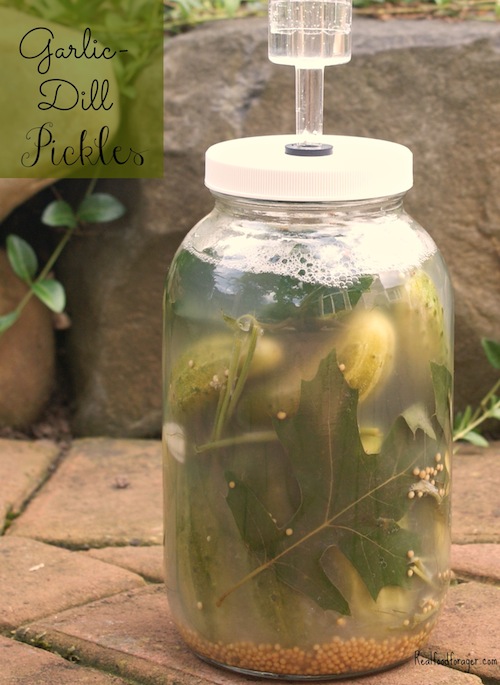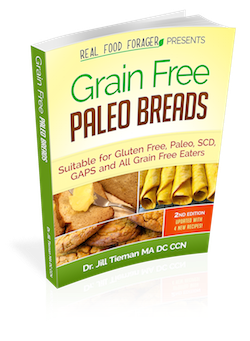What to do with all those cucumbers coming in? Make pickles! Pickles are easy to do at home and everyone loves them! Made the traditional way, by lacto-fermentation, they are a healthful addition to any meal. Cultured pickles are much better than the store bought pickles made in vinegar. They provide important probiotics, enzymes and nutrients to help with digestion.
Before refrigeration was invented lacto-fermentation was the method used to preserve food. Humans reaped the benefits of this method by eating these foods and hosting the good bacteria. Lactic acid is a natural preservative that inhibits putrefying bacteria. Lactobacilli reside on the surface of vegetables and fruits and will convert the sugars and starches in these foods into lactic acid.
Eating these naturally preserved foods aids the human digestive system in many ways. First and foremost, we are able to maintain large populations of beneficial bacteria in our gut simply by eating cultured foods. Most people who do this, will not require a probiotic supplement.
Beneficial Bacteria Live Symbiotically With Us
These bacteria form the mucosal layer of the human digestive tract. Most of the bacteria reside in the colon. However, they do live in all the other parts of the digestive tract, although in lower numbers. There are literally trillions of cells of bacteria, fungi and yeast living in a balanced harmonic state in a healthy individual. There are actually more gut microflora in our intestines than there are cells in our bodies. That’s a lot! And they are very important to our health.
Read more about how the bacteria in your gut helps you.
Here are links to other cultured foods with videos!
- Coconut Water Kefir with a video.
- Homemade Yogurt with a video.
- Fermented Beet Kvass with a video.
- Homemade Sauerkraut with a video.
- Whey and Yogurt Cheese with a video.
Before refrigeration was invented lacto-fermentation was the method used to preserve food. Humans reaped the benefits of this method by eating these foods and hosting the good bacteria. Lactic acid is a natural preservative that inhibits putrefying bacteria. Lactobacilli reside on the surface of vegetables and fruits and will convert the sugars and starches in these foods into lactic acid. Eating these naturally preserved foods aids the human digestive system in many ways. First and foremost, we are able to maintain large populations of beneficial bacteria in our gut simply by eating cultured foods. Most people who do this, will not require a probiotic supplement.
Beneficial Bacteria Live Symbiotically With Us
These bacteria form the mucosal layer of the human digestive tract. Most of the bacteria reside in the colon, but they do live in all the other parts of the digestive tract, although in lower numbers. There are literally trillions of cells of bacteria, fungi and yeast living in a balanced harmonic state in a healthy individual. There are actually more gut microflora in our intestines than there are cells in our bodies. That’s a lot! And they are very important to our health.
– See more at: https://realfoodforager.com/8-reasons-to-add-fermented-foods-to-your-diet/#sthash.BozYhRFK.dpuf
Garlic-Dill Pickles
Ingredients
3 pounds of small pickling cucumbers (organic, home grown is best)
1 head garlic peeled and crushed
1 bunch fresh dill
5 medium oak leaves (this helps keep them crisp)
1 Tbsp mustard seed
2 Tbsp sea salt (where to buy salt and spices)
Several bay leaves
Red pepper flakes (optional)
1 cup water with 1 packet culture starter (where to buy)
Water to fill the jar leaving 1 -2 inches head space
Equipment
- 1 quart mason jars (two) (where to buy airlock lids)
Instructions
- Wash all the fresh herbs, the cucumbers and the oak leaves
- Add half of the oak leaves, herbs and spices to the bottom of the jar
- Add the cucumbers setting them up vertically so that they fit tightly
- Add the rest of the herbs and spices
- Add the remaining cucumbers and again set them up vertically
- Add the salt and the culture starter to the water, mix and pour over cucumbers
- Add more water and pure over cucumbers
- Add enough water to cover everything and leave 1 -2 inches headspace
- Assemble the lid with the airlock if you have one
- Place a small plate or lid inside and fill with water to weigh down the cukes
- Cover with the lid
- Label and place in your fermenting cabinet for 5 – 14 days — some folks like them lightly fermented — others, like myself like them brewed longer so keep an eye on them and ferment to taste
- You may taste the cukes or just observe the color to see if they are finished to your liking
- When done, place in different jar in the refrigerator and use your fermenting jar again!
Tips for getting crispy pickles:
- Soak the cucumbers in a bowl of water with ice cubes for 30 minutes before putting them in the culture medium
- Use oak leaves or grape leaves in the fermenting jar — the tanins help keep them crisp
Prep Time: 15 minutes
Cook time: 2 weeks to culture
Easy














